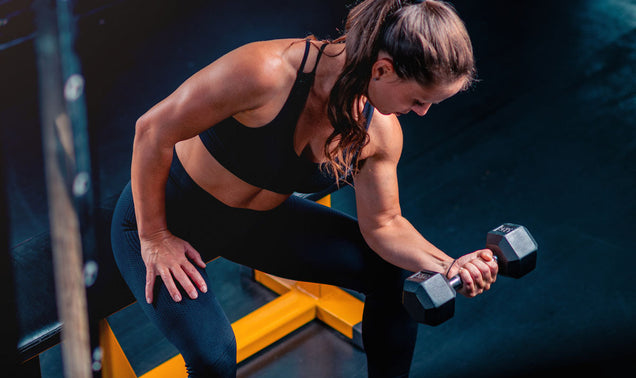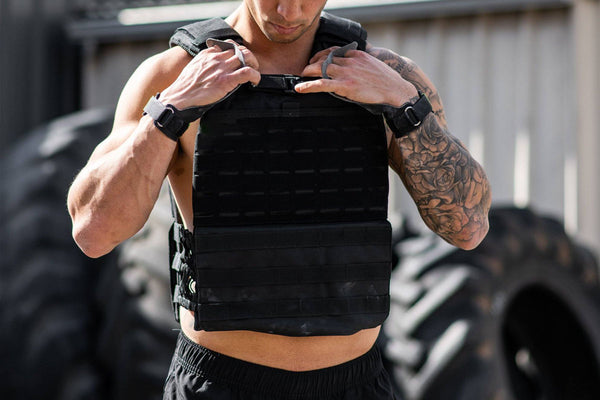Exercise has been shown time and time again to be an important part of healthy living. Not only does it help to burn calories and support a healthy body composition, it also improves cardiovascular health, reduces stress, boosts creativity, and enhances sleep quality.
However, we don’t always have time to get to the gym for our normal workout, which can leave many of us feeling frustrated and helpless about missing our workout. The good news is that you don’t have to go to the gym to exercise.
We’ve touched on the benefits of bodyweight workouts that can be done at-home (or anywhere else that you have room, but today we want to discuss another easy way to get in a great workout, burn calories, and get results when you can’t make it to the gym -- wearable weights.
What Are Wearable Weights?
Wearable weights are weights that can be worn on different parts of the body, such as your ankles or wrists. They also make vests that can be worn on the torso. These fitness “wearables” are designed to add resistance to your body to increase the challenge of your workout, be it cardio or resistance training workouts.
Wearable weights come in a variety of shapes, sizes, weights, materials and colors. They are highly customizable and can be used by individuals of diverse fitness levels to enhance their workouts and results.
What Are the Benefits of Wearable Weights?
Increased Calorie Burning
A number of factors impact your total daily energy expenditure (TDEE), including the number of calories your body burns from movement (both during exercise and during non-exercise physical activity).
The heavier your bodyweight, the more energy (calories) that your body has to burn in order to move your body around, even if it’s just walking to the mailbox.
Wearing a weight vest, wrist weights or ankle weights is an easy way to increase the challenge your muscles have to perform to move your body, which leads to greater calorie burning both during your workouts and at other times during the day.
Makes Bodyweight Workouts More Challenging
Bodyweight exercises like push ups, pull ups, inverted rows, dips, bodyweight squats, and lunges are incredibly effective for building strength. It requires next to no equipment (which saves you money on a gym membership) and can be done practically anywhere!
However, as you progress in your fitness journey, there comes a point when the “standard” versions of bodyweight exercises (calisthenics) will be more effective for increasing strength-endurance and improving cardiovascular fitness than building muscle and strength. In order to keep getting results, you need to increase the challenge of these exercises, which usually means progressing to harder variations (decline pushups or deficit push ups, for instance) or increasing time under tension.
Another way to make bodyweight exercises more challenging is by strapping on some wearable weights. Ankle weights seem light compared to your total body weight, but trust us, even adding as little as 2-5 pounds to your body can significantly increase the challenge of pull ups and dips.
Weight vests really shine when it comes to weighted calisthenics as it helps to keep the weight on your center of mass without restricting your arms or legs so you can do squats, lunges, push ups, rows, dips, pull ups, and other bodyweight exercises.
Builds Cardiovascular Strength & Muscular Endurance
Adding extra weight to your body increases the demand on your muscles as well as on your cardiovascular system -- to help drive more oxygen and nutrient-rich blood to your working muscles.
Don’t believe us?
Throw some heavy textbooks in a backpack and go on a 3-mile hike and see how quickly you’re drenched in sweat and breathing heavier than normal.
Remember, work is force multiplied by distance. Assuming you’re moving the same distance, a heavier body weight means your muscles have to exert extra force to propel your body through space.
In addition to burning more calories (see point #1 above), you’ll also challenge your muscles and cardio capacity. When you remove the weights and go about your normal daily activities, you’ll find that you have greater endurance, stamina, and fatigue resistance so those 3 flights of stairs you need to take to your apartment don’t seem so taxing anymore!
Tips for Adding Wearable Weights to Your Workouts
- Be conservative with your weight selections. You wouldn’t just walk into the gym and try to bench 225 having never previously benched before. Apply that same logic when going from pure bodyweight and wearable weights. Remember you can always increase the challenge once you assess how the increased loading on your body feels.
- Only wear these weights for limited periods of time to avoid overuse injuries and imbalances.
- Consider adding ankle weights when doing slower walks or hikes for enhanced movement quality.
- Don’t exceed 3% of your body weight in ankle weights.
- Incrementally increase the weight to increase the challenge on your muscles.
- If you experience joint ache, pains, or discomfort, then remove the weights and allow your body to heal.
- Use wearable weights (ankle weights, wrist weights, weight vests) with cardio or resistance training workouts to increase the challenge and boost results
Lastly, remember that when you increase the challenge of your workouts, your body’s energy and micronutrient needs can increase. As such, make sure you’re fueling your body properly with quality foods, getting enough sleep, and using the right supplements for your goals (e.g. protein powder, creatine, intra workouts carbs, amino acids supplements or a multivitamin).






